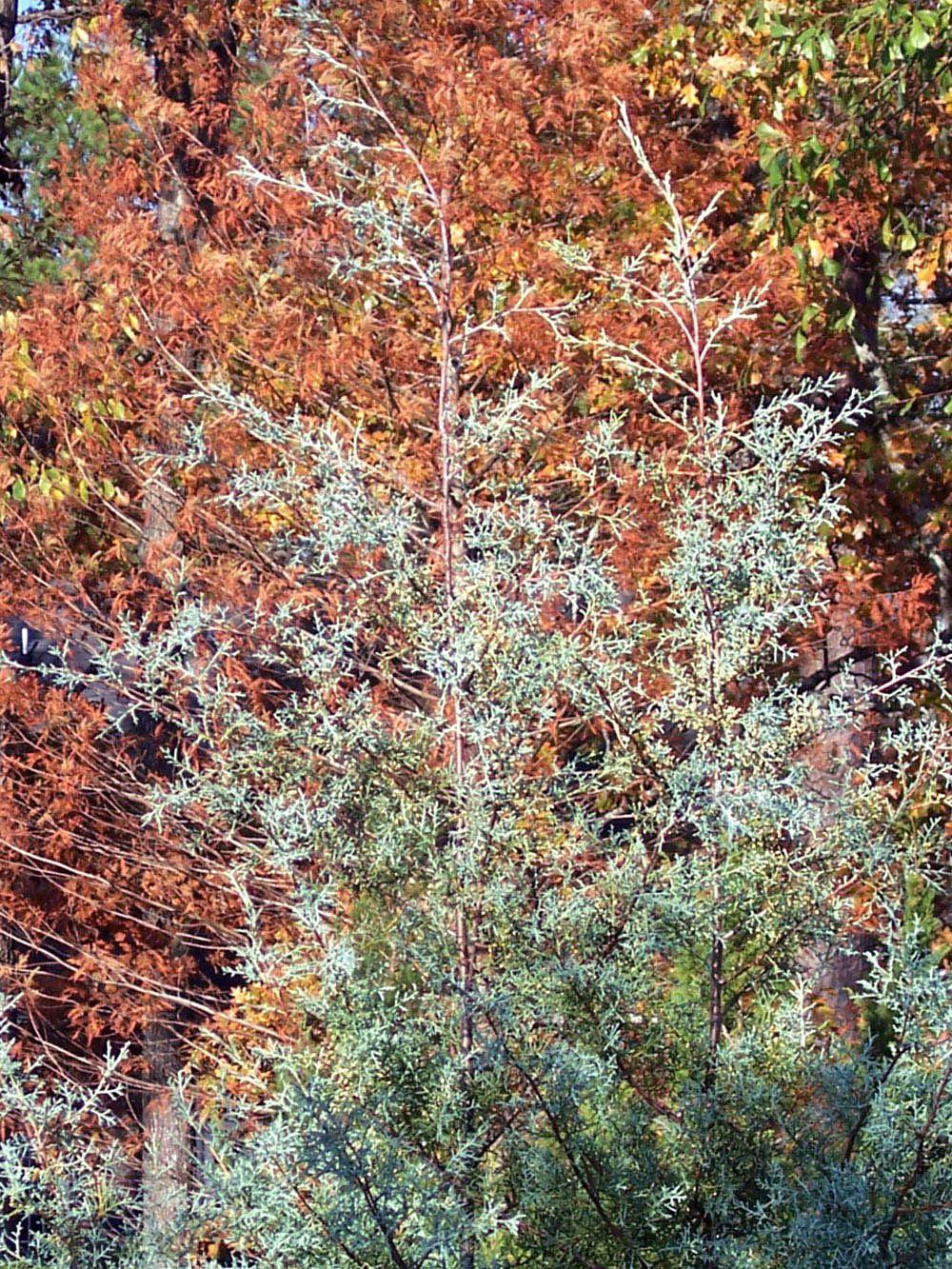Information Possibly Outdated
The information presented on this page was originally released on December 8, 2005. It may not be outdated, but please search our site for more current information. If you plan to quote or reference this information in a publication, please check with the Extension specialist or author before proceeding.
Winter landscapes need Arizona cypress
By Norman Winter
MSU Horticulturist
Central Mississippi Research & Extension Center
The winter landscape can look breathtakingly beautiful by choosing the right plants, such as the smooth Arizona cypress.
The Arizona cypress is known botanically as Cupressus glabra and is indeed native to Arizona. While that climate is decidedly different from ours, it has surprised many Southerners with its adaptability and has become a staple in many local pick-your-own Christmas tree farms. This has no doubt led to the public starting to realize how they stand out in the landscape. Known for its classic Christmas tree shape, the smooth Arizona cypress offers compact, beautiful, blue-green foliage.
Look closely to see that the small scale-like leaves are dotted with tiny white flecks that are actually resin glands. These glands yield an enticing evergreen fragrance when you grab or brush up against a branch.
We shot the Arizona cypress in several locations last week when we were filming our Southern Gardening television segment. One thing that really stood out was the dark cherry-colored stems. These stems make for a very unusual yet beautiful look in contrast with the blue-green foliage. Several of the classic Christmas tree-shaped cypress were decorated to the hilt in the landscape.
To grow your own, select a site with as much sun as possible. This really allows the color to pop. The smooth Arizona cypress performs well in almost any soil, acidic or alkaline, so long as it is well drained. This would be one logical place where we would differ from Arizona. They don't get enough rain to worry much about drainage.
If your soil is tight, heavy clay and not well drained, then plan on amending it with 3 to 4 inches of organic matter and work the bed to a depth of 8 to 10 inches. The best idea might be to copy today's commercial landscapers and plant on raised beds. The Arizona cypress is very drought tolerant once established, but pay attention to watering the first year.
If you have thought about having a living Christmas tree, this would be an ideal choice. Use it indoors for about a week to 10 days and then take it outside to be planted as a memory of Christmas 2005.
The smooth Arizona cypress is an extremely ornamental tree, so a single specimen or small group makes a dramatic statement in the landscape. They also can be used for windbreaks or privacy screens. One setting that we filmed used them with bright green cryptomerias or Japanese cedar, Leyland cypress and pines.
I have noticed that we still offer a lot of plants generically, but there are several varieties in the marketplace. Look for Blue Ice, Carolina Sapphire and Blue Pyramid.
The winter landscape needs evergreens to look its best. When you can choose a blue-foliaged form like the smooth Arizona cypress, the landscape is even prettier. Look for these and other choice conifers at your local garden center.


